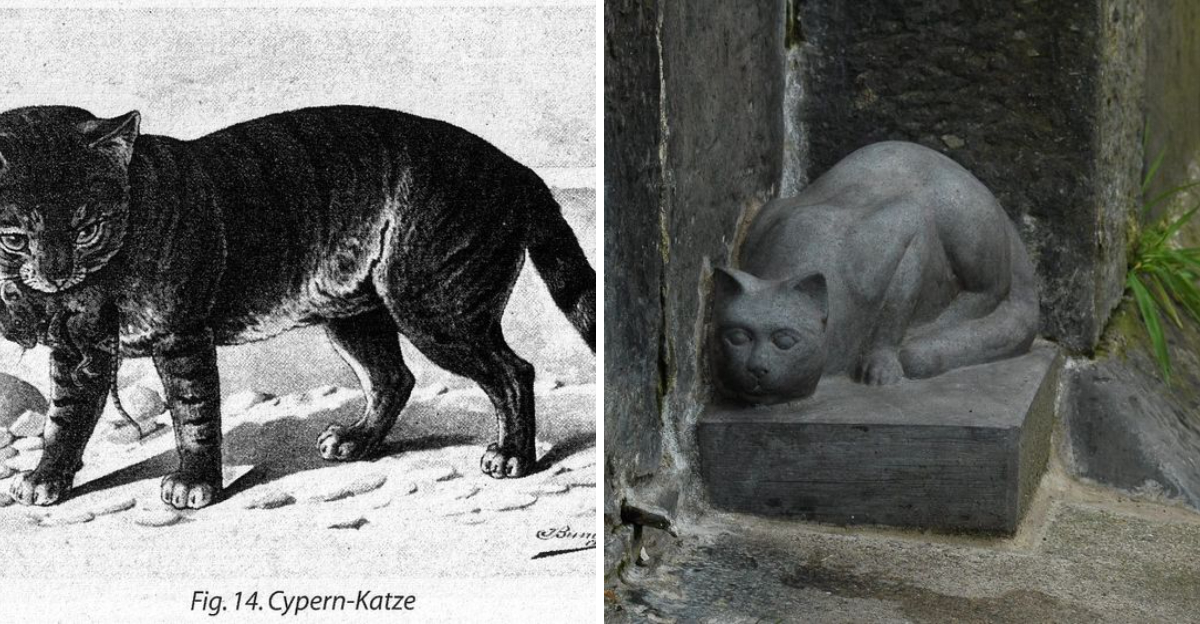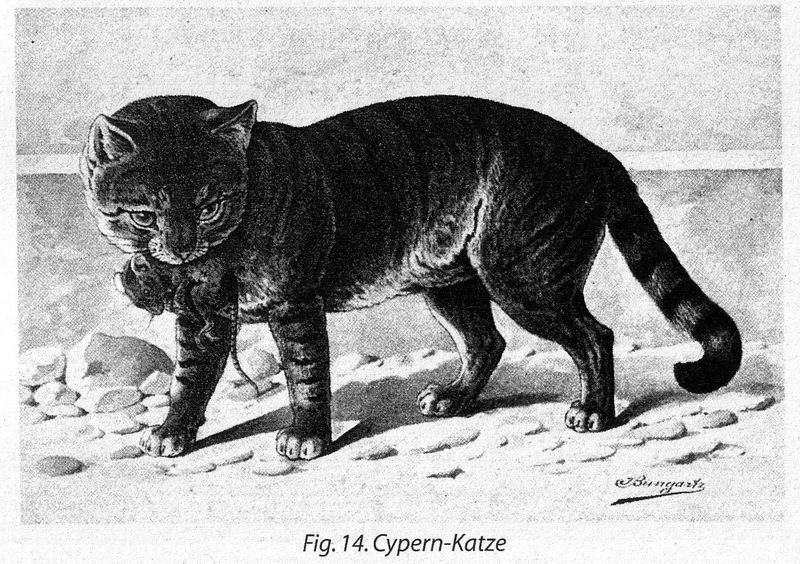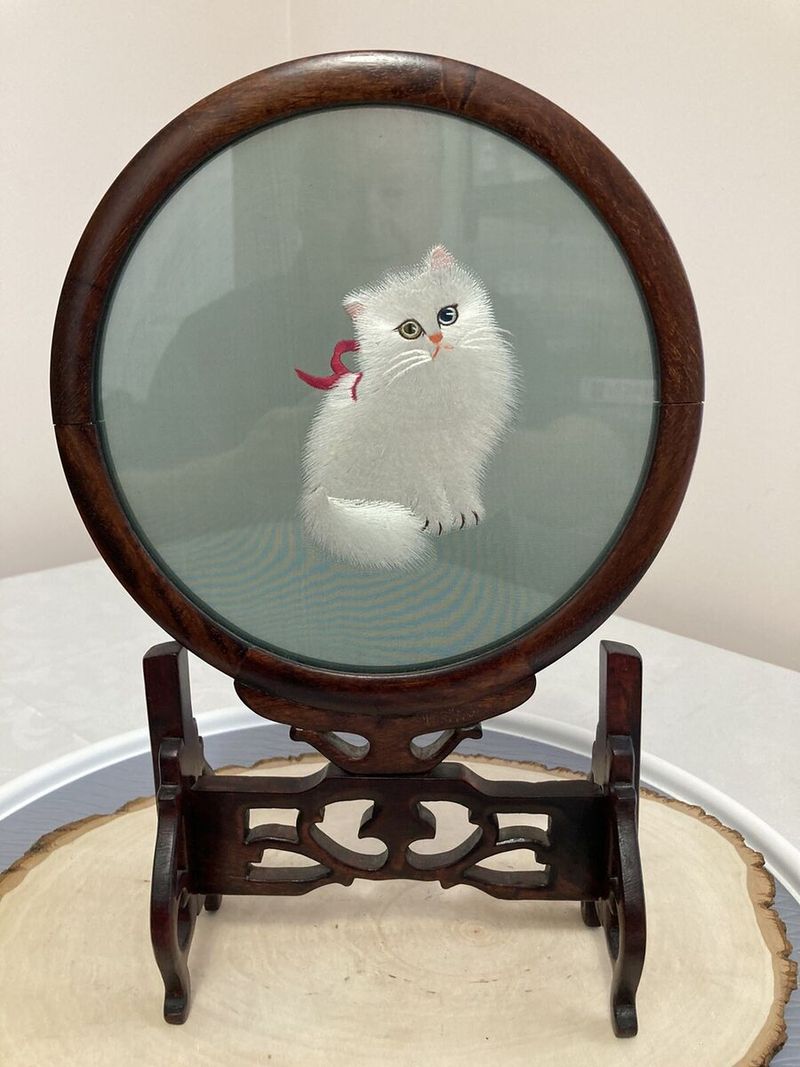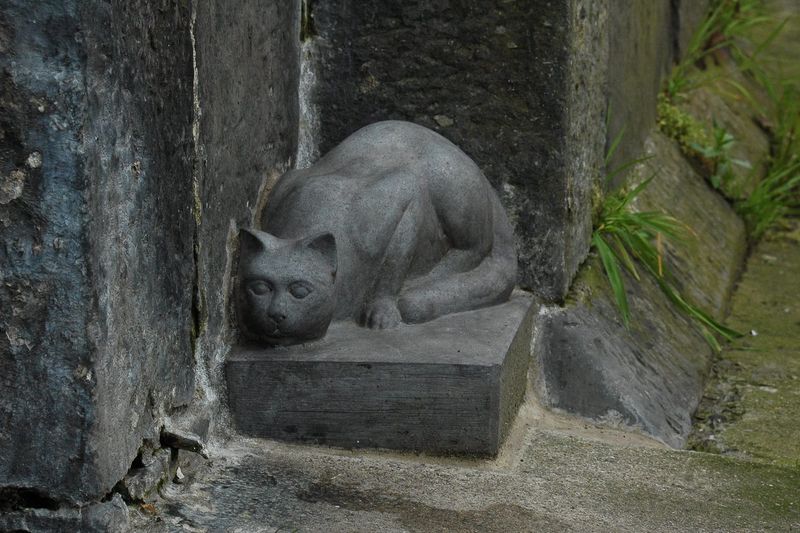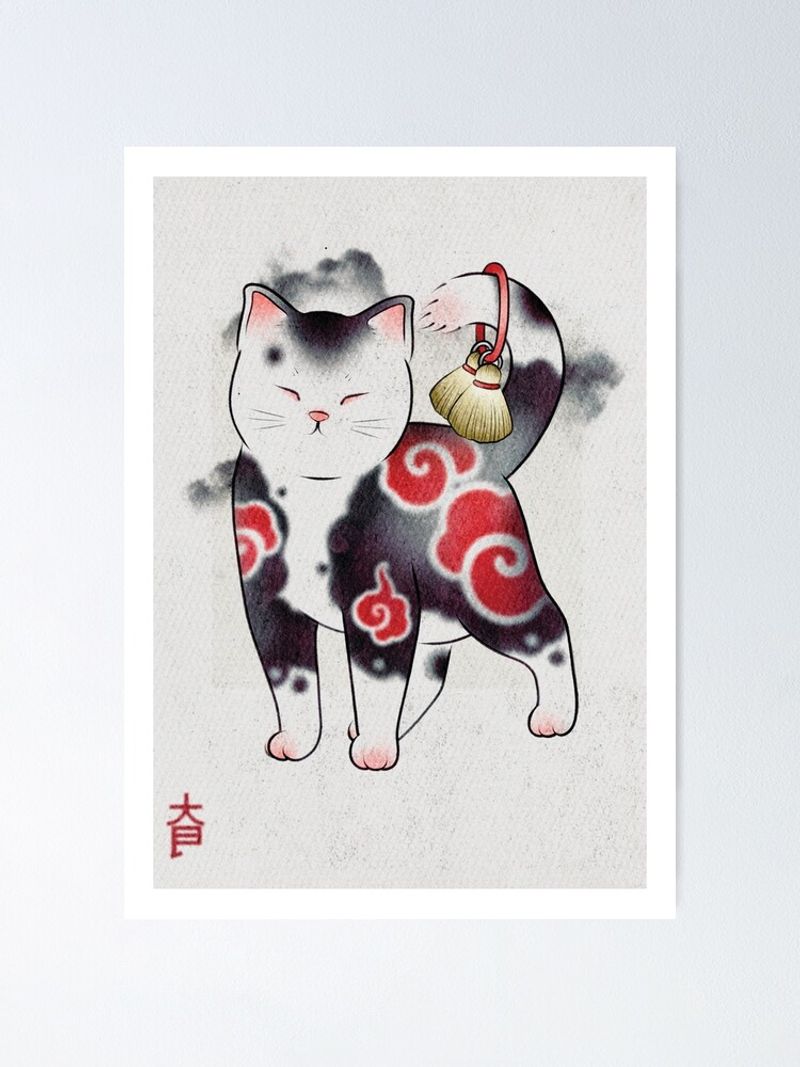📖 Table of Content:
Not all legends walk on two legs—some padded softly through ancient temples, across royal courts, and along windswept docks, leaving only pawprints in the sands of time. These vanished feline breeds weren’t just pets; they were companions to emperors, guardians of sacred grounds, and sailors’ trusted allies on treacherous seas. Each cat had a story, a purpose, and a place in the tapestry of human history—until time, conquest, and changing tastes swept them into obscurity.
Today, only fragments remain: a faded portrait, a ship’s log, a myth whispered in folklore. But their memory endures in the shadows of our imagination.
Join us as we journey through the annals of history to rediscover eight extraordinary cat breeds that once held a place of honor in homes and hearts around the world—before vanishing forever.
1. St. Augustine Cat
Sporting a luxurious coat twice as thick as today’s Persian cats, the St. Augustine Cat ruled Spanish households in the 16th century. These golden-eyed beauties were brought to Florida by Spanish explorers and quickly became status symbols among wealthy colonists.
Unlike modern domesticated cats, St. Augustines were expert swimmers who would often catch fish alongside their human companions. Their distinctive ear tufts and broad faces gave them an almost lion-like appearance.
The breed gradually disappeared after the British took control of Florida, with the last documented St. Augustine Cat recorded in a household inventory from 1797. Their genetic traits may live on in some modern American shorthair bloodlines.
2. Celtic Hill Cat
Roaming the highlands of ancient Ireland and Scotland, Celtic Hill Cats were renowned for their remarkable climbing abilities and distinctive blue-tinged fur. Smaller than most domestic breeds, these agile hunters formed unique partnerships with Celtic tribes, who considered them spiritual protectors of their homes.
Celtic Hill Cats featured unusually large paws with extra toes, allowing them to navigate rocky terrain with ease. Ancient texts describe their haunting vocalizations that echoed through misty valleys. The breed gradually vanished during the Roman conquest of Britain, with the last known specimens kept by isolated Highland clans until approximately the 9th century.
Some historians believe they were deliberately crossbred with Roman cats, diluting their unique traits.
3. Egyptian Bast Cat
Named after the Egyptian goddess Bastet, these slender, jet-black felines were considered living embodiments of divine protection. With elongated bodies and almond-shaped emerald eyes, Bast Cats stood out even in ancient Egypt’s cat-loving society.
Unlike other Egyptian cats, Bast Cats possessed a unique vocalization pattern that priests interpreted as divine messages. They lived primarily in temples where they were pampered, adorned with gold jewelry, and fed choice cuts of fish and fowl.
The breed disappeared gradually after Egypt fell to Roman rule, with religious practices changing and temple cats dispersing. The last known pure Bast Cat was mummified around 30 BCE, discovered in a tomb near Alexandria with inscriptions detailing its sacred lineage.
4. Cyprus Sailor Cat
Beloved companions of Mediterranean sailors, Cyprus Sailor Cats sported distinctive water-resistant striped coats and remarkably balanced inner ears. These medium-sized felines were prized for their uncanny ability to predict storms hours before they hit, potentially saving countless maritime lives.
Ship captains considered these cats essential crew members, often paying more for a good Sailor Cat than for human deckhands. Their unique adaptation to sea life included an ability to drink small amounts of saltwater without harm.
The breed vanished gradually as wooden sailing vessels gave way to steam-powered ships in the late 19th century. The last documented Cyprus Sailor Cat belonged to a Greek sponge diver in 1892, with the sailor reporting his feline companion had warned him of an approaching squall that would have otherwise claimed his life.
5. Khmer Temple Cat
Guardians of Angkor Wat and other Cambodian temples, Khmer Temple Cats possessed striking copper-colored coats and unusually short, curved tails. These highly territorial felines were believed to protect sacred spaces from evil spirits, with priests carefully breeding them for their distinctive appearance and vigilant temperament.
Unlike many domesticated cats, Khmer Temple Cats formed strong bonds with specific temple structures rather than people. They developed a fascinating behavior of patrolling the same routes at precisely the same times each day, leading some to use them as living timepieces.
The breed disappeared during the Siamese invasions of the 15th century, with conquering forces reportedly capturing the sacred cats as war prizes. A few isolated populations may have survived until the 17th century, but extensive crossbreeding with Siamese cats eventually erased their unique genetic profile.
6. Manchurian Silk Cat
Prized possessions of Chinese imperial families, Manchurian Silk Cats featured extraordinarily fine, flowing coats with a texture resembling raw silk. These medium-sized felines came exclusively in pure white, with striking violet eyes that supposedly changed shade according to their mood.
Imperial records describe how only members of the ruling dynasty could own these cats, with unauthorized possession punishable by death. Court painters frequently included them in royal portraits, where their distinctive posture – sitting upright with one paw raised – symbolized good fortune. The breed vanished following the collapse of the Qing Dynasty in 1912.
Revolutionary forces specifically targeted these cats as symbols of imperial excess, with some reports suggesting the last breeding pairs were consumed during food shortages. A few specimens may have escaped to Mongolia, but no verifiable sightings exist after 1925.
7. Dublin Dock Cat
Emerging as a distinct breed in 18th-century Ireland, Dublin Dock Cats were celebrated for their extraordinary rat-catching abilities and distinctive emerald-green eyes. These muscular, short-haired felines developed specialized hunting techniques that made them invaluable in protecting grain shipments and warehouse goods.
Dock workers formed strong bonds with these cats, creating special sleeping quarters in warehouses and sharing their meals with their feline partners. Their most remarkable trait was their collaborative hunting style, working in small groups to systematically clear areas of rodents.
The breed began declining with the modernization of shipping practices and the introduction of chemical pest control. The Great Famine dealt the final blow, as food scarcity meant fewer resources to maintain breeding populations. The last known pure Dublin Dock Cats were documented in shipping logs from 1882.
8. Japanese Cloud Cat
With their smoke-colored fur that seemed to shift and swirl like morning mist, Japanese Cloud Cats were living art pieces in feudal Japan. These medium-sized felines were particularly valued by samurai families, who believed the cats could detect malicious spirits and protect household honor.
Cloud Cats possessed remarkably soft vocalizations that folklore described as “whispers from the spirit world.” Their most distinctive physical feature was their unusual eye color – a silvery gray that reflected light in a mesmerizing way.
The breed began declining during the Meiji Restoration when Western cats were imported and considered fashionable. The devastating Tokyo earthquake of 1923 destroyed several remaining breeding programs. The last documented pure Cloud Cat belonged to an elderly Kyoto tea master who passed away in 1940, leaving no surviving offspring of his prized companion.
